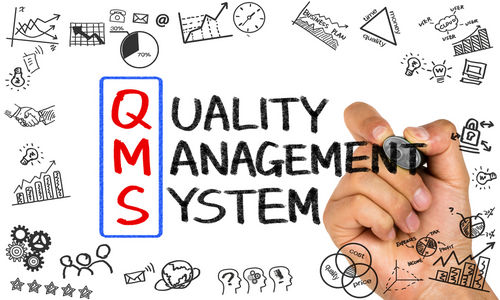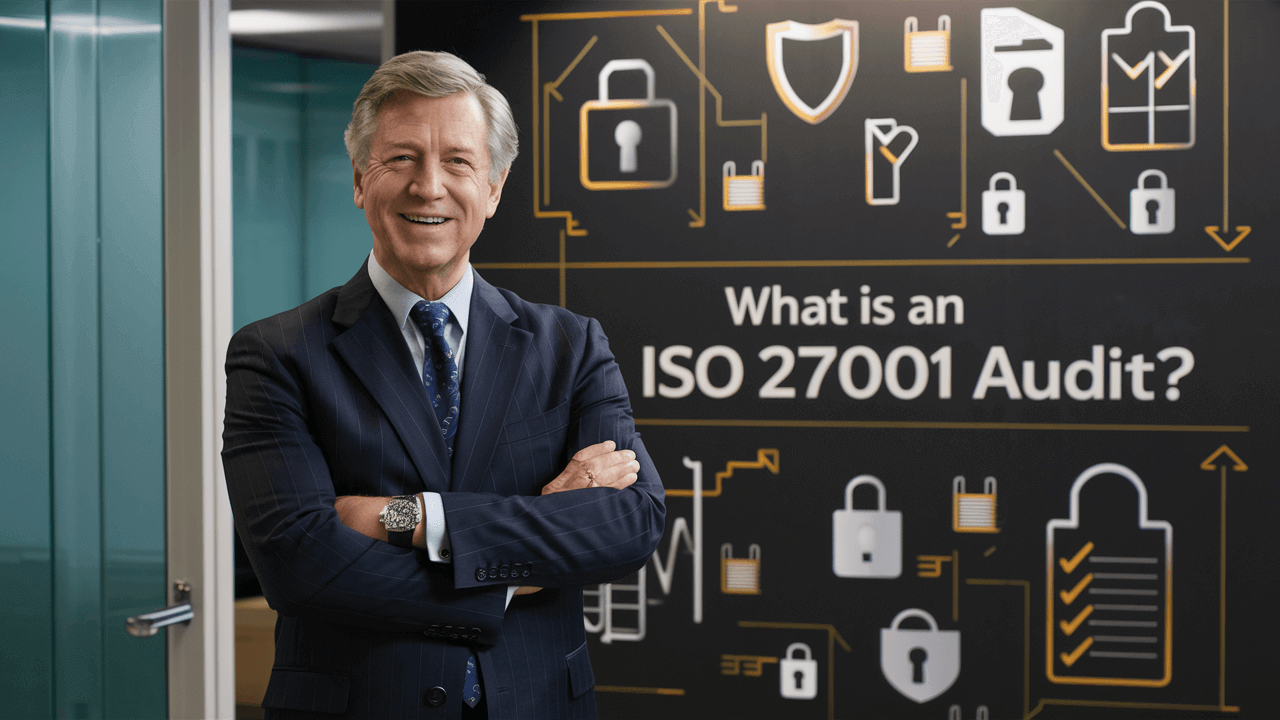In today’s competitive business landscape, ensuring high-quality products and services is essential for organizations to thrive. Quality Management Systems play a pivotal role in achieving and maintaining excellence in business operations. Among various quality management frameworks, ISO 9001 stands out as a widely recognized and internationally accepted standard. This blog explores the key elements of a quality management system with relevance to ISO 9001, shedding light on the fundamental principles that drive continuous improvement and customer satisfaction.

Jump ahead to
7 Key Elements of ISO 9001 Quality Management System:
Leadership and Organizational Commitment:
The foundation of any effective quality management system is strong leadership and organizational commitment. ISO 9001 emphasizes the importance of top management’s active involvement in quality initiatives. Leaders must define and communicate quality objectives, establish a quality policy, allocate necessary resources, and foster a culture of quality throughout the organization. This assists management in setting the tone for quality excellence.
Leadership commitment involves providing resources and support for implementing and maintaining the quality management system. It includes a clear definition of roles, establishing a quality management team, and promoting employee involvement in quality improvement activities. Effective leadership creates a sense of purpose and direction, inspiring employees to embrace quality as a core value.
Customer Focus and Stakeholder Engagement:
Understanding and meeting customer requirements are central to ISO 9001. Organizations must identify their customers’ needs, expectations, and preferences, align their products and services accordingly, and strive to exceed customer satisfaction. Regularly engaging with stakeholders, including customers, suppliers, and employees, helps gather valuable feedback and insights to drive improvement initiatives and enhance customer relationships.
Customer focus starts with market research and analysis to understand customer expectations and needs. This information then helps to establish product and service specifications, quality objectives, and performance indicators. Regular customer feedback and satisfaction surveys allow organizations to measure customer perception and identify areas for improvement.
Stakeholder engagement goes beyond customer focus and includes actively involving all relevant stakeholders in the quality management system. By fostering open communication and collaboration, organizations can gain valuable insights, align expectations, and build stronger relationships throughout the value chain.
Process Approach:
The process approach is a core principle of ISO 9001. It involves identifying, analyzing, and managing interrelated processes to achieve desired outcomes. Defining clear process objectives, documenting procedures, and establishing performance metrics, helps organizations to systematically monitor and improve their processes. The process approach promotes efficiency, consistency, and traceability, enabling organizations to optimize their operations and deliver consistent quality.
Each process is then evaluated to identify potential bottlenecks, risks, and opportunities for improvement. Process owners are responsible for monitoring and optimizing their respective processes, ensuring compliance with quality standards and objectives.
Risk-Based Thinking:
ISO 9001:2015 introduced risk-based thinking as a fundamental concept. Organizations are encouraged to identify potential risks and opportunities, assess their impact on quality objectives, and develop appropriate preventive and corrective measures. This proactive method of analyzing risks helps in mitigating the likelihood of quality issues, enhances decision-making processes, and minimizes negative impacts on customers and stakeholders.
Risk-based thinking involves identifying internal and external factors that could impact the organization’s ability to achieve quality objectives. These factors can include technological changes, regulatory requirements, market shifts, and operational vulnerabilities. Through risk assessments, organizations prioritize their risks and develop risk mitigation plans, incorporating preventive actions, contingency measures, and continuous monitoring.
Documented Information and Knowledge Management:
ISO 9001 emphasizes the importance of accurate and up-to-date documentation to ensure effective quality management. Organizations must establish and maintain documented information that defines their quality management system, including policies, procedures, work instructions, and records. Additionally, knowledge management practices, such as capturing lessons learned, promoting continuous learning, and preserving organizational knowledge, support improvement efforts and prevent recurring quality issues.
Documented information serves as a reference for employees, ensuring consistent understanding and implementation of quality processes. It helps establish clear guidelines, facilitates training and development, and ensures regulatory compliance. Knowledge management focuses on capturing, organizing, and sharing tacit and explicit knowledge within the organization. Lessons learned from past experiences, best practices, and innovation initiatives are documented and disseminated to foster a culture of continuous learning.
Performance Monitoring and Measurement:
To drive continual improvement, ISO 9001 requires organizations to establish a robust system for performance monitoring and measurement. Key Performance Indicators (KPIs) assess process performance, customer satisfaction, and overall quality objectives. Regular audits, inspections, and management reviews enable organizations to identify deviations, trends, and opportunities for improvement. Timely and accurate data analysis empowers informed decision-making and helps prioritize improvement initiatives.
Performance monitoring and measurement involve setting specific metrics aligned with quality objectives. These metrics can include product defects, customer complaints, on-time delivery, process cycle times, and employee performance. By regularly collecting and analyzing performance data, organizations gain insights into process efficiency, identify areas of non-conformance, and monitor progress toward quality goals.
Continual Improvement:
The concept of continual improvement lies at the heart of ISO 9001. Organizations need to establish a culture of continuous improvement, where employees identify areas for enhancement and contribute to quality initiatives. Through the systematic application of problem-solving methodologies, such as Plan-Do-Check-Act (PDCA) or Six Sigma, organizations can drive innovation, optimize processes, and enhance overall quality performance.
Continual improvement requires organizations to establish improvement goals, identify improvement opportunities, and systematically implement changes. This can include process optimization, product innovation, employee training, and customer feedback incorporation. The PDCA cycle serves as a framework for iterative improvement, emphasizing planning, implementing, monitoring, and reviewing actions.
Conclusion
Implementing a robust quality management system based on ISO 9001 provides organizations with a structured framework to enhance customer satisfaction, drive continual improvement, and achieve operational excellence. The key elements discussed in this blog, including leadership commitment, customer focus, process approach, risk-based thinking, performance monitoring, supplier management, documented information, and continual improvement, collectively form the foundation for successful quality management. Professionals interested in comprehensively understanding these elements can opt for ISO 9001 Lead Implementer Training.
Summary
The 7 key elements of a quality management system (QMS) under ISO 9001: leadership commitment, customer focus, process approach, risk-based thinking, documented information, performance measurement, and continual improvement. It emphasizes that strong leadership and a culture of quality drive sustained excellence. Risk-based thinking helps organizations proactively address challenges and seize opportunities. Clear documentation and knowledge management ensure consistency and learning.Explore Unichrone’s ISO 9001 Lead Implementer Training to build a robust QMS in your organization.
FAQ’s on Quality Management System
1. What is a Quality Management System (QMS)?
A QMS is a structured framework of policies, processes, and documentation to ensure consistent quality of products and services.
2. Why is leadership commitment important in a QMS?
Leadership ensures quality goals, policies, and resources are aligned and supported across the organization.
3. How does customer focus improve quality?
By understanding and meeting customer needs, organizations can tailor processes to boost satisfaction and loyalty.
4. What does a process-approach mean in quality management?
It means defining, controlling, and improving interrelated processes for consistent and efficient quality outcomes.
5. What is risk-based thinking in ISO 9001?
It’s a proactive strategy to identify, assess, and mitigate risks and seize opportunities related to quality.
6. Why is documented information essential in QMS?
It provides standardized procedures, ensures repeatable quality, and captures organizational knowledge.
7. How are performance and quality measured?
With KPIs, audits, inspections, and regular management reviews to detect deviations and track improvement.
8. What is continual improvement in a QMS?
iterative cycles (like PDCA), organizations systematically improve processes, products, and services.
9. How does ISO 9001 relate to QMS?
ISO 9001 is a globally accepted standard that outlines requirements for building and maintaining a QMS.
10. Can organisation benefit from ISO 9001 Lead Implementer Training?
Yes, Unichrone’s Training helps professionals to implement QMS correctly and get certified for ISO 9001 Lead Implementer .



